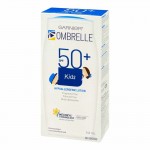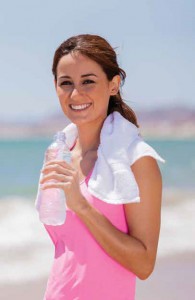 Your vacation is a special time: a gift to yourself for working hard, a time to celebrate perhaps, or simply a part of your retirement lifestyle. Spending a good part of your holiday running to and from the washroom is not a good idea—nor is it necessary when a few simple precautions will prevent most bouts of travellers’ diarrhea.
Your vacation is a special time: a gift to yourself for working hard, a time to celebrate perhaps, or simply a part of your retirement lifestyle. Spending a good part of your holiday running to and from the washroom is not a good idea—nor is it necessary when a few simple precautions will prevent most bouts of travellers’ diarrhea.
More commonly known as turista, Montezuma’s revenge or Delhi belly, travellers’ diarrhea is a disorder of the digestive system caused by parasites or bacteria. These micro-organisms are ingested in contaminated water and other beverages, and foodstuffs. Although they usually do not affect the local population, whose systems have adapted to them, they can cause severe stomach upset, vomiting and diarrhea in visitors.
The risk of travellers’ diarrhea occurs worldwide but some destinations pose a higher risk than others. High risk destinations include developing countries in Central and South America, Mexico, Africa, the Middle East and Asia. Moderate risk exists in Eastern Europe and some parts of the Caribbean.
While travellers’ diarrhea is most commonly experienced when travelling to foreign countries, it can also be picked up when travelling locally, and is particularly common among campers who have used stream or rainwater for drinking or cooking.
The condition can be caused by a number of micro-organisms including the bacteria E. coli, Salmonella, Shigella and Campylobacter; parasites such as Giardia, Cryptosporidium, and Cyclospora, and viruses including norovirus and rotavirus.
Recognizing the symptoms
 Symptoms of travellers’ diarrhea vary depending on the particular micro-organism that has caused the illness.
Symptoms of travellers’ diarrhea vary depending on the particular micro-organism that has caused the illness.
In addition to loose, watery stools, symptoms usually include fever, nausea, vomiting, bloating, abdominal cramping and an urgent and/or frequent need to use the bathroom. (These are caused by the body attempting to rid itself of the pathogens.)
How to prevent it
Preventing travellers’ diarrhea means being vigilant. Here are a few pointers that should reduce your risk. Be sure to read through them before you leave and several times while you are away as they are easy to forget when you’re having fun.
- Remember to boil it, cook it, peel it or leave it.
- Always wash your hands before eating or preparing food.
- Carry alcohol-based hand sanitizer with you for use when soap and water aren’t available.
- Only eat foods that are well cooked and served hot. Avoid raw shellfish, food served at room temperature and salads that you have not prepared yourself using safe water.
- Eat fruits and vegetables only if you have washed them in safe water or peeled them yourself.
- Never consume foods or unsealed beverages bought from street vendors.
- Only drink water that has been boiled, disinfected, or is purchased in a commerciallysealed bottle.
- Remember to use ice made only from purified or disinfected water and always ask the server to omit ice if this is not assured.
- Always brush your teeth with purified or bottled water.
- Avoid unpasteurized dairy products and fruit juices.
- When swimming in pools, hot tubs, or showering, be careful not to swallow water, which may not be properly treated.
- The same preventive action should be followed on the flight home, which will be serviced by a foreign flight kitchen. Avoid salads and drinks containing water or ice cubes.
When to see a doctor
Generally, the symptoms of travellers’ diarrhea go away in a few days without treatment but, in severe and rare cases, the condition can lead to extreme dehydration, shock, coma, and even death. This is particularly true for children, the elderly and individuals with chronic diseases or weakened immune systems.
You should seek prompt medical attention if you have severe dehydration, persistent vomiting, bloody stools or a high fever, or if your symptoms last for more than a few days.
Always seek medical attention for a child if you notice the following: Persistent vomiting; bloody stools or severe diarrhea; a fever of 102° F (39° C) or more; dry mouth or lack of tears when crying; being unusually sleepy, drowsy or unresponsive, or if your child’s volume of urine is decreased (or you notice fewer wet diapers in infants).




 Children with red hair and freckles, who usually burn and do not easily tan when out in the sun, or those with blonde hair or several moles, are at greatest risk of sun damage and developing skin cancer later on in life.
Children with red hair and freckles, who usually burn and do not easily tan when out in the sun, or those with blonde hair or several moles, are at greatest risk of sun damage and developing skin cancer later on in life. Most sun damage occurs as a result of incidental exposure during day-to-day activities, not from actually being at the beach or other place where you might expect your child to develop sunburn.
Most sun damage occurs as a result of incidental exposure during day-to-day activities, not from actually being at the beach or other place where you might expect your child to develop sunburn. The Canadian Paediatric Society recommends that children wear sunglasses providing 100 per cent UV protection. Wraparound styles are best.
The Canadian Paediatric Society recommends that children wear sunglasses providing 100 per cent UV protection. Wraparound styles are best. Dehydration—the term given to the depletion of water levels within the body—can make you feel rotten. It can also have a serious impact on the body, which cannot be reversed simply by drinking a glass or two of water.
Dehydration—the term given to the depletion of water levels within the body—can make you feel rotten. It can also have a serious impact on the body, which cannot be reversed simply by drinking a glass or two of water. Your vacation is a special time: a gift to yourself for working hard, a time to celebrate perhaps, or simply a part of your retirement lifestyle. Spending a good part of your holiday running to and from the washroom is not a good idea—nor is it necessary when a few simple precautions will prevent most bouts of travellers’ diarrhea.
Your vacation is a special time: a gift to yourself for working hard, a time to celebrate perhaps, or simply a part of your retirement lifestyle. Spending a good part of your holiday running to and from the washroom is not a good idea—nor is it necessary when a few simple precautions will prevent most bouts of travellers’ diarrhea. Symptoms of travellers’ diarrhea vary depending on the particular micro-organism that has caused the illness.
Symptoms of travellers’ diarrhea vary depending on the particular micro-organism that has caused the illness.
